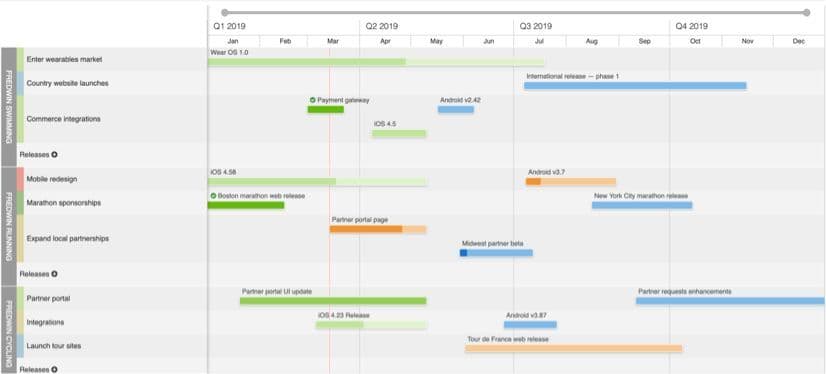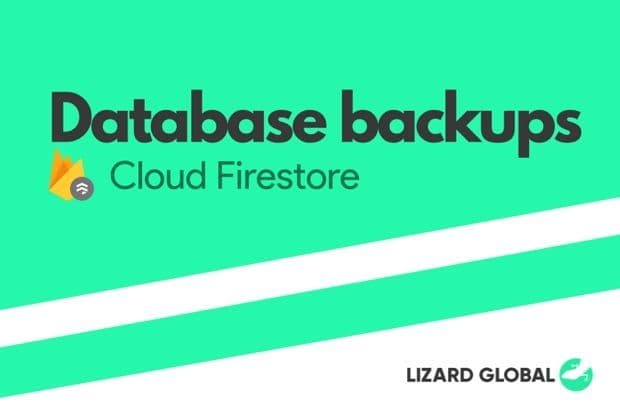product roadmap
app development
+ 3 more ...
7 Steps Towards a Successful Product Roadmap
24 Sep 2020
by Lotte, Digital Content Specialist
24 Sep 2020
by Lotte, Digital Content Specialist
product roadmap
app development
agile
scrum
sprint
7 Steps Towards a Successful Product Roadmap
Table of contents
Contact us
We will get back to you in the next 48 hours.

A product roadmap is an essential part of the process of app development, and supports the team with keeping track of what’s important.
The term “product roadmap” frequently pops up when talking about app development. But what exactly is a product roadmap? A product roadmap gives a broad overview of all the elements that are involved in the development of a product, or in this case, an application. This involves the goals, general timeline, features, resources, plannings, etc. The roadmap indicates what a development team is working towards and what solution they are developing to solve a certain problem. In short, it outlines the vision, direction, priorities and progress of a product over time. This blog dives deeper into the use of roadmaps, and how a development team can efficiently work towards the creation of a successful product roadmap in 7 steps.
1. Collect input for defining the problem
Like any other practice with an agile basis, the first step almost always consists of collecting input from the customer in order to define their problem. After all, a right solution can only be established when the problem is crystal clearly defined. This first human-centred phase of customer input involves the principles of design thinking, which lets product owners step into the shoes of their customers and end-users in order to create a deeper understanding of the problem.
This process forms the basis of your roadmap, so it is of high importance that the internal communication between all stakeholders is clear and continuous. Any miscommunications in this stage can cause confusion and disappointment further on in the process of creating the product roadmap.
2. Define the when, what, how, where, and why of the product
Once input is collected, it’s time to create a rough draft of the whens, the whats, hows, wheres and the whys of the product. These elements describe every single detail of the product, from where and when it’ll be used to why and how:
- When: At what moments will people use this product?
- Where: In what locations will this product be used?
- What: What is the main function of this product?
- How: How do specific features of this product solve the problem of the end-user?
- Why: What is the problem that needs to be solved for whom?
Having a list like this will be helpful throughout the rest of the road towards the creation of a product roadmap. It helps with keeping the focus on the most important aspects of the product and lowers the risk of getting sidetracked or overwhelmed in the process.
3. Dive into the customer’s needs
Diving even deeper into the needs of the end-user requires a deeper level of empathy. Now it’s clear what the problem is, the focus can be narrowed down by creating a deeper understanding of the experience and needs of the end-user. This can be done by creating user stories, which document the journey of the end-user in detail. Generally, a typical user story is built upon a structure that looks a bit like this:
“As a [type of user] I want [a particular feature] in order to [interaction description].”
Creating user stories like that contributes to the process of empathizing with the customer and looking at the product with their background, and from their perspective. Think of it as turning your end-user in a fictional character or persona, which is a common practice businesses use to improve their connection with their customers in order to optimize the customer experience of their product or service.
4. Reflect on these needs and brainstorm for potential solutions
This is the moment to take all collected information and input from all stakeholders and combine it with your own interpretations and experiences. This is the moment of brainstorming and having a close look at the defined problem and potential solutions. This process consists mostly of jotting down everything that comes to mind to discuss it afterwards with colleagues and end-users. During this process, one can already narrow their potential solutions down to a select few, which saves some time in the next phase of the process of product roadmapping: prioritizing.
5. Prioritize what needs to be done
Prioritizing what exactly needs to be done is one of the most difficult steps in this process. Mostly because it’s difficult to narrow down all the input collected from all stakeholders, and because it’s often forgotten that less is almost always more. One of the best ways to prioritize what needs to be done and when is by defining the minimum viable product, or MVP. Which is a product that has enough features to satisfy its early users and receive viable feedback for future development. It contains the most essential features and pushes less essential features to a future stage. It’s prioritizing at its most efficient in the process of app development.
Working towards an MVP requires a list of only the most essential features, and a backdrop of features that might improve the product in the future, after users have used and tested the MVP. Developers work towards the basic version of the product, and are only able to decide afterwards what features can be added or improved.
6. Use the right tools
Once all ideas are collected and prioritized, it’s time for visualizing the product roadmap. Just like basically any other process in app development, there are tools for product roadmapping that fasten the process of visualization and are optimized in such a way that they’re easily usable for newcomers. Here are some tools that might come in handy when visualizing a product roadmap:
Although most of these services are based on paid memberships, they also offer free trials or free basic versions to try out their services. As a beginning roadmapper it’s always a good idea to try out different tools and applications to find out which one fits your ways of working. Below you find an example of a product roadmap made with the Aha! tool.

7. Present the roadmap
Once all information is visualized, it’s time for the product owner to showcase their product roadmap to all stakeholders in the app development process. All elements in the product roadmap are discussed, as a roadmap isn’t fully finished until all stakeholders have seen and confirmed it. This involves all stakeholders of the production team: the product owners, designers, engineers, marketeers, but also the end-users and the market. After all, they will be the ones to actually make use of the product, and have the most important voice when it comes to value.
Oh, and don’t forget to update your roadmap every once in a while. A product roadmap isn’t a static document. As any other document or process in agile software development, the product roadmap changes along with iterative feedback and adjustments done along the way.
Product Roadmaps at Lizard Global
Lizard Global is greatly invested in all the processes that are involved in application development. Our product owners are experienced in design thinking methodologies, in order to understand the customer and define a fitting solution for their problem. We aim to work together with our clients as partners, rather than just providing a service. This is why our customers are closely involved in all processes of the development of their app, including the process of product roadmapping. We go through the entire process step-by-step to make sure that the development process goes as smoothly and efficiently as possible.
Want to know more about product roadmaps and how we use them to provide our customers with an optimized customer experience? Get in touch with us!

A product roadmap is an essential part of the process of app development, and supports the team with keeping track of what’s important.
The term “product roadmap” frequently pops up when talking about app development. But what exactly is a product roadmap? A product roadmap gives a broad overview of all the elements that are involved in the development of a product, or in this case, an application. This involves the goals, general timeline, features, resources, plannings, etc. The roadmap indicates what a development team is working towards and what solution they are developing to solve a certain problem. In short, it outlines the vision, direction, priorities and progress of a product over time. This blog dives deeper into the use of roadmaps, and how a development team can efficiently work towards the creation of a successful product roadmap in 7 steps.
1. Collect input for defining the problem
Like any other practice with an agile basis, the first step almost always consists of collecting input from the customer in order to define their problem. After all, a right solution can only be established when the problem is crystal clearly defined. This first human-centred phase of customer input involves the principles of design thinking, which lets product owners step into the shoes of their customers and end-users in order to create a deeper understanding of the problem.
This process forms the basis of your roadmap, so it is of high importance that the internal communication between all stakeholders is clear and continuous. Any miscommunications in this stage can cause confusion and disappointment further on in the process of creating the product roadmap.
2. Define the when, what, how, where, and why of the product
Once input is collected, it’s time to create a rough draft of the whens, the whats, hows, wheres and the whys of the product. These elements describe every single detail of the product, from where and when it’ll be used to why and how:
- When: At what moments will people use this product?
- Where: In what locations will this product be used?
- What: What is the main function of this product?
- How: How do specific features of this product solve the problem of the end-user?
- Why: What is the problem that needs to be solved for whom?
Having a list like this will be helpful throughout the rest of the road towards the creation of a product roadmap. It helps with keeping the focus on the most important aspects of the product and lowers the risk of getting sidetracked or overwhelmed in the process.
3. Dive into the customer’s needs
Diving even deeper into the needs of the end-user requires a deeper level of empathy. Now it’s clear what the problem is, the focus can be narrowed down by creating a deeper understanding of the experience and needs of the end-user. This can be done by creating user stories, which document the journey of the end-user in detail. Generally, a typical user story is built upon a structure that looks a bit like this:
“As a [type of user] I want [a particular feature] in order to [interaction description].”
Creating user stories like that contributes to the process of empathizing with the customer and looking at the product with their background, and from their perspective. Think of it as turning your end-user in a fictional character or persona, which is a common practice businesses use to improve their connection with their customers in order to optimize the customer experience of their product or service.
4. Reflect on these needs and brainstorm for potential solutions
This is the moment to take all collected information and input from all stakeholders and combine it with your own interpretations and experiences. This is the moment of brainstorming and having a close look at the defined problem and potential solutions. This process consists mostly of jotting down everything that comes to mind to discuss it afterwards with colleagues and end-users. During this process, one can already narrow their potential solutions down to a select few, which saves some time in the next phase of the process of product roadmapping: prioritizing.
5. Prioritize what needs to be done
Prioritizing what exactly needs to be done is one of the most difficult steps in this process. Mostly because it’s difficult to narrow down all the input collected from all stakeholders, and because it’s often forgotten that less is almost always more. One of the best ways to prioritize what needs to be done and when is by defining the minimum viable product, or MVP. Which is a product that has enough features to satisfy its early users and receive viable feedback for future development. It contains the most essential features and pushes less essential features to a future stage. It’s prioritizing at its most efficient in the process of app development.
Working towards an MVP requires a list of only the most essential features, and a backdrop of features that might improve the product in the future, after users have used and tested the MVP. Developers work towards the basic version of the product, and are only able to decide afterwards what features can be added or improved.
6. Use the right tools
Once all ideas are collected and prioritized, it’s time for visualizing the product roadmap. Just like basically any other process in app development, there are tools for product roadmapping that fasten the process of visualization and are optimized in such a way that they’re easily usable for newcomers. Here are some tools that might come in handy when visualizing a product roadmap:
Although most of these services are based on paid memberships, they also offer free trials or free basic versions to try out their services. As a beginning roadmapper it’s always a good idea to try out different tools and applications to find out which one fits your ways of working. Below you find an example of a product roadmap made with the Aha! tool.

7. Present the roadmap
Once all information is visualized, it’s time for the product owner to showcase their product roadmap to all stakeholders in the app development process. All elements in the product roadmap are discussed, as a roadmap isn’t fully finished until all stakeholders have seen and confirmed it. This involves all stakeholders of the production team: the product owners, designers, engineers, marketeers, but also the end-users and the market. After all, they will be the ones to actually make use of the product, and have the most important voice when it comes to value.
Oh, and don’t forget to update your roadmap every once in a while. A product roadmap isn’t a static document. As any other document or process in agile software development, the product roadmap changes along with iterative feedback and adjustments done along the way.
Product Roadmaps at Lizard Global
Lizard Global is greatly invested in all the processes that are involved in application development. Our product owners are experienced in design thinking methodologies, in order to understand the customer and define a fitting solution for their problem. We aim to work together with our clients as partners, rather than just providing a service. This is why our customers are closely involved in all processes of the development of their app, including the process of product roadmapping. We go through the entire process step-by-step to make sure that the development process goes as smoothly and efficiently as possible.
Want to know more about product roadmaps and how we use them to provide our customers with an optimized customer experience? Get in touch with us!







